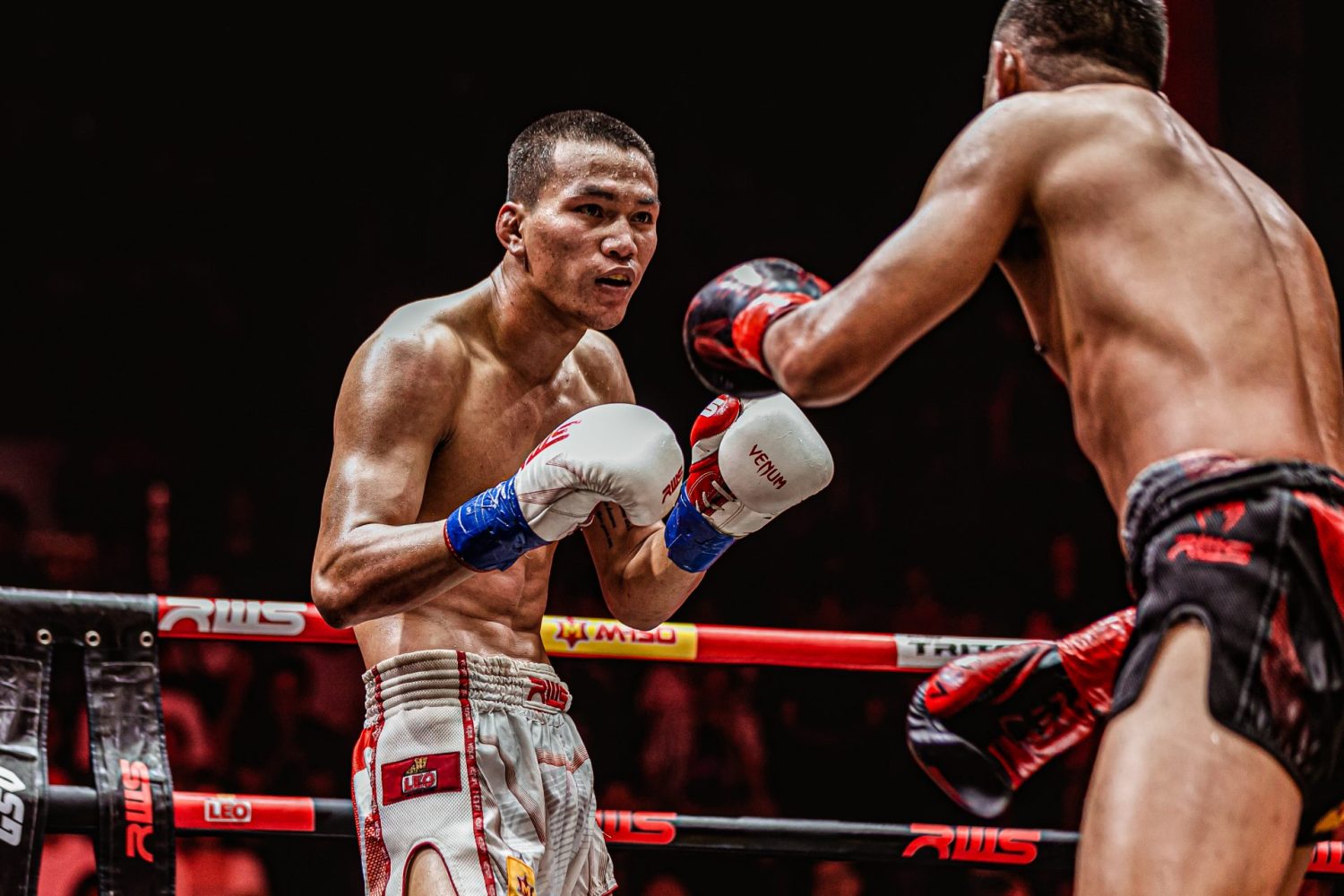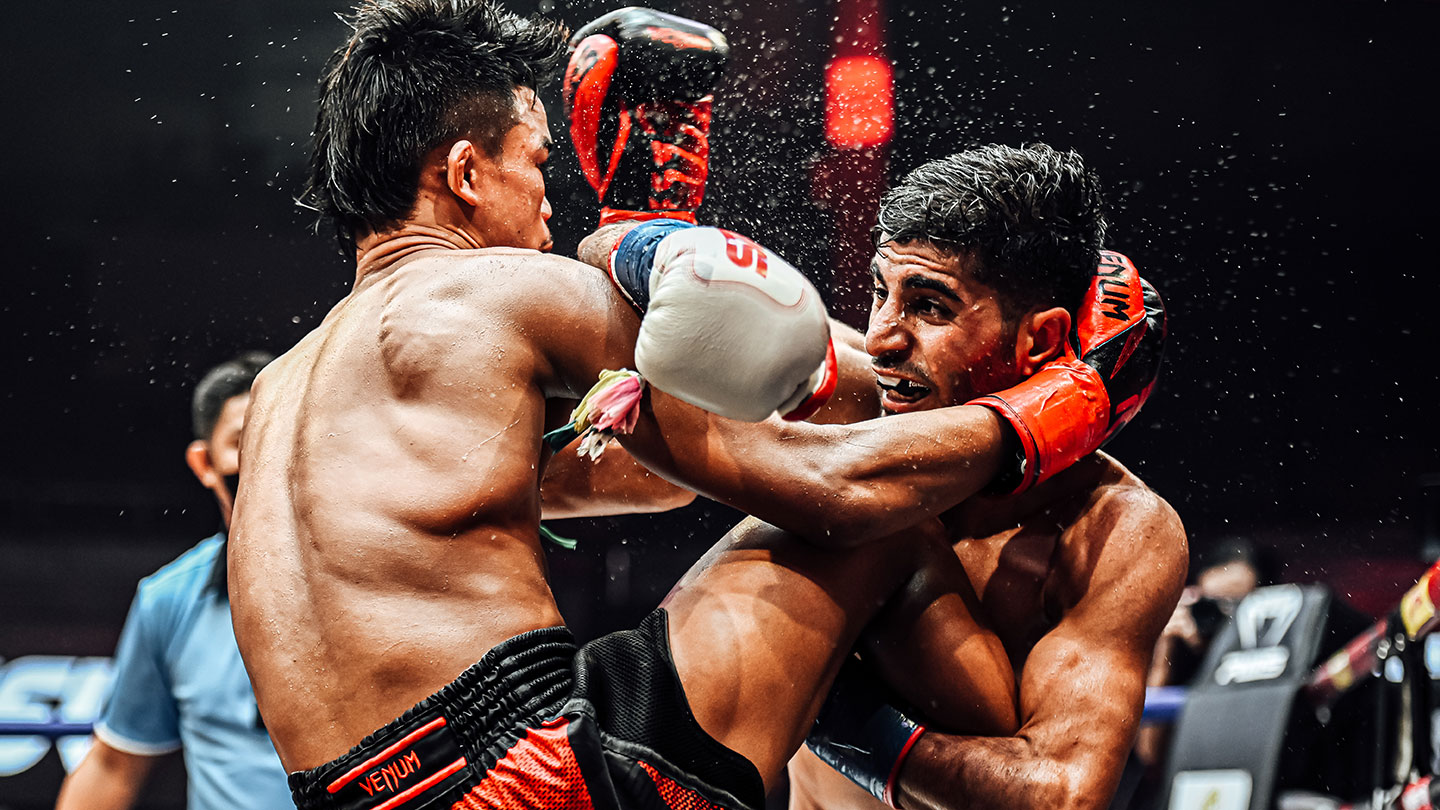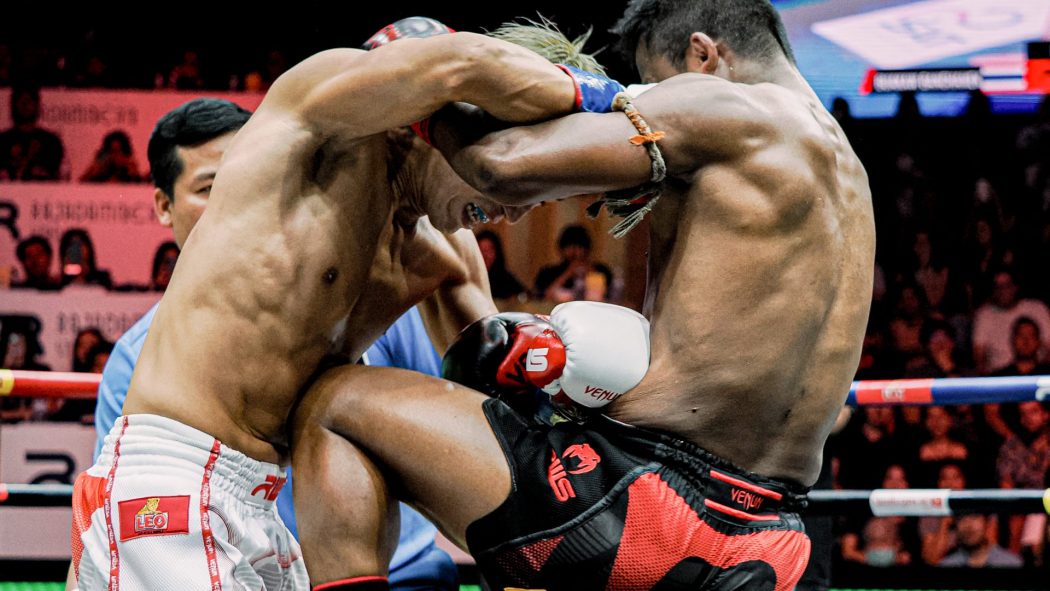Unlock the secrets of Muay Thai stances with our comprehensive guide. Learn traditional vs. modern techniques, footwork, and gain an edge in the ring.
Mar 7, 2024
Muay Thai Stance: A Comprehensive Guide for Beginners

In the world of martial arts, Muay Thai stands out for its powerful strikes and intense combat style. Whether you’re a newbie at the gym or a seasoned practitioner, Muay Thai demands not just physical strength but also a deep understanding of its fundamental elements. At the core of this ancient martial art lies the importance of mastering the Muay Thai stance—a dynamic and foundational aspect that serves as the cornerstone of every practitioner’s journey. Therefore, the significance of adopting the correct traditional Muay Thai stance cannot be overstated. In this guide, we’re breaking down the basics of Muay Thai fighting stances including
The Fundamentals of Muay Thai Stance

In the dynamic realm of Muay Thai, your stance is the foundation of your fighting strategy. Achieving balance and setting the stage for powerful strikes and defense are essential components. Start with a stable shoulder-width feet placement, angling slightly outward for mobility. Distribute weight evenly for a centered position, enabling effective maneuvers.
Traditional vs. Modern Muay Thai Stances
Muay Thai, like any martial art, has evolved over time, adapting to new training methodologies and combat strategies. This evolution is particularly evident in the transformation of stances from traditional to modern approaches.
Traditional Muay Thai Stances
- Square Stance:
- Feet are positioned more square to the opponent.
- Emphasizes balance and power in stationary positions.
- Suited for traditional Muay Boran techniques.
- High Guard:
- Guards are held higher, covering the face and head extensively.
- Prioritizes defense over quick strikes.
- Often associated with older Muay Thai styles.
- Front-Foot Dominance:
- The lead foot is more forward, providing stability and blocking.
- Suited for countering and defensive maneuvers.
Modern Muay Thai Stances:
- Sideways Stance:
- A more sideways orientation, offering a smaller target.
- Favors mobility, enabling quick lateral movements.
- Ideal for incorporating Western boxing techniques.
- Lower Guard:
- Guards are held lower, emphasizing quicker counterattacks.
- Facilitates faster hand speed and response times.
- Popularized by modern fighters who blend multiple striking styles.
- Adaptation of Footwork:
- Greater emphasis on Muay Thai footwork stances for strategic positioning.
- Incorporation of circular movements, angles, and swift transitions.
- Reflects a more dynamic and fluid approach to combat.
Evolution of Stances in Contemporary Muay Thai
In the realm of contemporary Muay Thai, the evolution of stances reflects a dynamic fusion of traditional roots and modern influences. Fighters today are not bound by a singular approach but instead draw from a diverse array of techniques.
The basic Muay Thai stances, characterized by square positioning, high guards, and a focus on stationary power, have undergone a metamorphosis. Modern practitioners often adopt a more sideways stance, providing a smaller target and emphasizing increased mobility. This shift allows for quick lateral movements and facilitates the incorporation of Western boxing techniques.
Key Elements of Muay Thai Fighting Stances

The effectiveness of your fighting stance is paramount as mastering the key elements ensures not only a solid defense but also sets the stage for powerful strikes and strategic maneuvers. Let’s break down the essential elements that constitute the best Muay Thai stance;
- Balance and Mobility
- Distribute your weight evenly on both legs for swift mobility.
- Keep your weight on the balls of your feet for agility.
- Flex your knees slightly to lower your center of gravity, enhancing stability.
- Staying light on your feet is crucial for dynamic footwork.
- Foot Positioning
- Begin by standing with your feet shoulder-width apart.
- Angle your feet outward at around 45 degrees for a solid base.
- Muay Thai foot positioning is crucial for balanced movement.
- Choose the orientation that aligns with your fighting style.
- Guard Positions
- Elevate your lead arm to protect your face, ensuring the elbow is positioned down.
- Tuck your rear hand close to your cheek, creating a defensive barrier.
- Muay Thai guard position shields against strikes while maintaining readiness for counters.
Importance of Balance, Foot Positioning, and Guard Positions
Importance of Balance
Balance is the cornerstone of a formidable Muay Thai fighting stance. It is the equilibrium that allows you to seamlessly execute offensive and defensive maneuvers. With a well-maintained balance, you can move efficiently, respond swiftly to your opponent’s actions, and unleash powerful strikes with precision. A fighter with impeccable balance is a challenging force in the ring, capable of controlling the pace of the bout and adapting to various situations.
Importance of Foot Positioning
The placement of your feet is the blueprint of your stance. Correct foot positioning provides stability, agility, and control over the fight’s dynamics. Whether adopting a traditional or modern stance, understanding the nuances of foot positioning is key. It dictates your ability to move, pivot, and strike effectively. A fighter who commands their foot positioning can dictate the distance, control the ring, and launch calculated attacks.
Importance of Guard Positioning
Guard positions serve as your shield in the intricate dance of Muay Thai. A well-constructed guard protects your vital areas while offering openings for strategic counterattacks. The importance of a properly executed guard cannot be overstated—it is the first line of defense against incoming strikes, providing a foundation for maintaining composure and readiness in the face of adversity. A fighter who masters guard positions exhibits not only defensive prowess but also the strategic acumen to turn defense into offense seamlessly.
Footwork Techniques in Muay Thai

Effective footwork in Muay Thai is essential for tactical maneuvering, enabling fighters to control distance, evade attacks, and unleash potent strikes. Here’s an overview of various footwork techniques integral to Muay Thai stances:
- Step and Slide: A fundamental technique involving stepping forward or backward while maintaining a connected, sliding movement. Allows quick adjustments to distance and creates angles for strikes.
- Lateral Movement: Sideways movement to evade attacks and create openings. Enhances overall agility and allows fighters to circle opponents strategically.
- Pivoting: Rotation on the balls of the feet to change the angle of attack or defense. Essential for setting up kicks, angles, and creating openings.
- Angle Steps: Diagonal steps to create angles for attacks or defenses. Facilitates the ability to attack from unexpected positions.
- Switching Stance: Changing the position of the lead and rear foot. Offers versatility, confuses opponents, and opens up different offensive and defensive options.
- Shuffling: Small, quick steps to maintain a constant rhythm. Enhances overall mobility and readiness to counter or attack.
- Feinting Steps: Deceptive steps to mislead opponents and set up attacks. Creates uncertainty and can draw reactions for strategic advantage.
Practical Tips for Improving Agility and Movement:
- Drills and Shadowboxing: Engage in footwork drills and shadowboxing to reinforce muscle memory. Practice various footwork techniques consistently to build agility and fluidity.
- Agility Exercises: Incorporate agility exercises such as ladder drills, cone drills, and agility ladder workouts. Enhance overall foot speed, coordination, and responsiveness.
- Jump Rope Workouts: Jumping rope improves foot coordination and cardiovascular endurance. Incorporate different patterns and intensities to mimic the dynamic nature of Muay Thai footwork.
- Focus on Balance: Balance exercises like single-leg stands and stability drills are crucial. Solid balance is the foundation of effective footwork.
Southpaw vs. Orthodox Stance: Which is Right for You?
In Muay Thai, the choice between a Southpaw Muay Thai stance (left-handed) and Orthodox Muay Thai stance (right-handed) significantly influences a fighter’s strategy and the dynamics of a match. Here’s an explanation of the differences between Southpaw and Orthodox stances, along with tips for choosing the stance that suits individual preferences:
Differences Between Southpaw and Orthodox Stances:
- Lead Hand and Foot:
- Orthodox Stance: In the Orthodox stance, the left foot is forward, and the left hand is the lead hand.
- Southpaw Stance: The Southpaw stance is the opposite, with the right foot forward, and the right hand serving as the lead hand.
- Advantages of Angles:
- Orthodox: Typically, an Orthodox fighter has an advantage when circling to their left (clockwise).
- Southpaw: Southpaw fighters often have an advantage when circling to their right (counterclockwise).
- Power Side:
- Orthodox: The power side for an Orthodox fighter is the right side, which is used for powerful punches and kicks.
- Southpaw: Southpaw fighters derive power from their left side.
- Mirrored Techniques:
- Orthodox: Techniques and combinations are often mirrored with the right side leading.
- Southpaw: The left side takes the lead in mirrored techniques for Southpaw fighters.
Tips for Choosing the Stance That Suits Individual Preferences:
- Natural Dominance: Consider your natural dominance. If you are left-handed and feel more comfortable with your left side leading, a Southpaw stance might suit you.
- Adaptability: Test both stances during training to gauge comfort and adaptability. Some fighters switch stances fluidly during a match based on the situation.
- Striking Preference: If you have a strong preference for certain strikes (e.g., powerful left kicks or jabs), align your stance to emphasize your strengths.
- Opponent Analysis: Consider studying potential opponents. If they have a weakness against a specific stance, you may choose to exploit it.
Defensive and Offensive Strategies in Muay Thai Stance
Let’s explore how adopting different stances contributes to overall fight tactics:
Defensive Strategies:
- Square Stance for Robust Defense: A squared stance presents a smaller target area to opponents. Ideal for fighters who prioritize defensive solidity and strategic counterattacks.
- Sideways Stance for Evasive Maneuvers: A sideways stance facilitates lateral Muay Thai movement stance, allowing for effective evasion. Suited for those who rely on agility and quick defensive responses.
- High Guard for Shielding Vital Areas: Employing a high guard provides comprehensive coverage for the face and head. Shields against direct strikes and maintains readiness for counters.
Offensive Strategies:
- Square Stance for Power Shots: The squared stance provides a solid base for generating power in strikes. Enables strong kicks and punches, making it effective for offensive fighters.
- Sideways Stance for Precision Strikes: A sideways stance allows for quick and precise strikes, especially with the lead hand.
- Switching Stance for Versatility: Fighters adept at switching stances gain a versatility advantage. Effective for those who employ a diverse range of striking techniques.
Muay Thai Stance Training Drills
Here are some drills designed to help you practice and enhance your stances:
Footwork Agility Drills:
Set up cones or markers in a pattern on the floor. Practice various footwork techniques around the markers, emphasizing balance and quick transitions.
Stance Switching:
Start in one stance and practice fluidly switching between orthodox and southpaw.
This drill enhances versatility and adaptability during a fight.
Defensive Maneuvers:
Have a partner throw controlled strikes while you practice Muay Thai defensive stance.
Incorporate slips, checks, and blocks into your stance to improve defensive reflexes.
Partnered Clinch Drills:
Engage in clinch drills with a partner, emphasizing balance and maintaining a strong Muay Thai clinch stance.
Experience the Thrill at Rajadamnern Stadium

For enthusiasts seeking the authenticity of Muay Thai, attending live matches at the historic Rajadamnern Stadium is an unparalleled experience. Nestled in the heart of Bangkok, Rajadamnern Stadium stands as a beacon of Muay Thai tradition. Steeped in history, this iconic venue has witnessed legendary battles, showcasing the pinnacle of skill and warrior spirit.
From the electric ambiance to the thunderous cheers of the crowd, every match at Rajadamnern is a celebration of the sport’s rich heritage. Don’t miss your chance to be part of the legacy – secure your tickets on our website right now and witness the majesty of Muay Thai unfold before your eyes.
Related News

Mastering Muay Thai Footwork: The Dance of Precision
Feb 13, 2024
Dive into the dance of Muay Thai footwork. Master techniques, drills, and experience live Muay Thai at Rajadamnern Stadium in Thailand.







